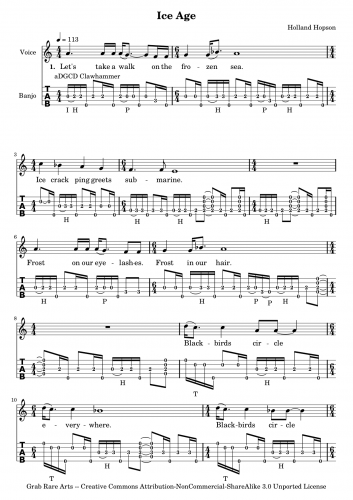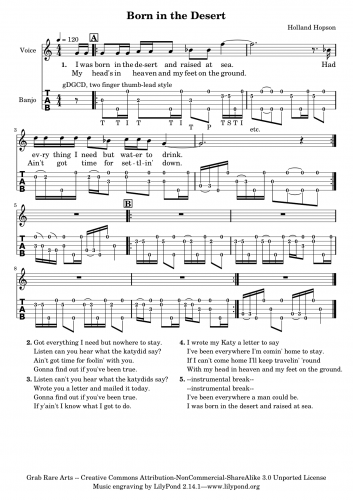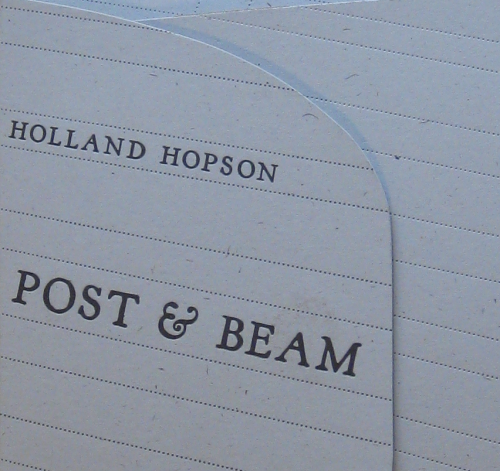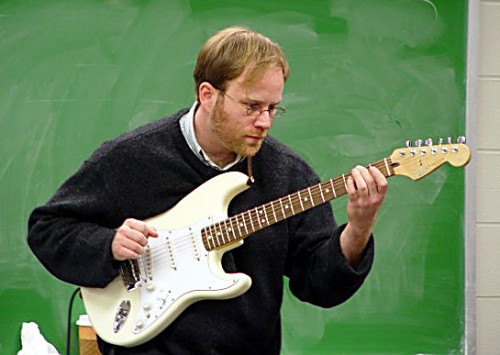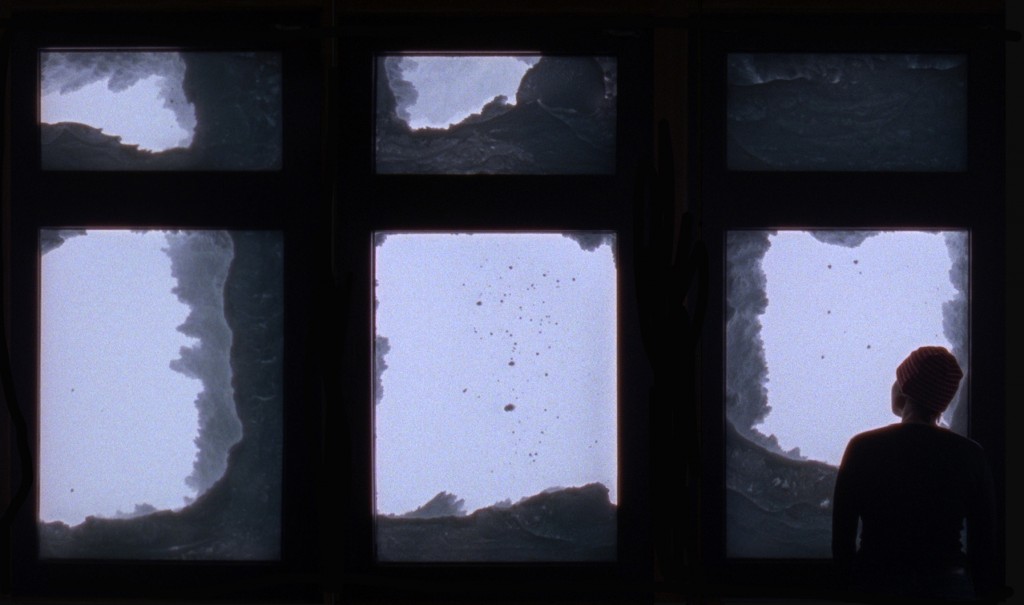This month’s score from Post & Beam is Ice Age.
Download the score as a pdf file: ice_age.pdf
Download the score as a Lilypond .ly file: ice_age.ly
Notes on Ice Age
- I call this banjo tuning the “So What” tuning since it produces the same voicing as the horn chords in the Miles Davis tune “So What”. (Bar all four strings at the second fret. Strum. Release. Strum. Whattya know! Modal jazz and mountain modal banjo tunings…same difference.)
- I wrote most of the lyrics while pushing my son around in his stroller, wondering what would be worse: global warming or my first upstate New York winter in ten years.
- The electronics part was originally all about a piercing drone that slowly oscillates between a and b-flat. The movement between the pitches is based on the gestures played by the banjo and would sometimes produce amazing microtonal difference tones. Listening back to my recordings I realized how painful the experience could be for the audience. With the encouragement and discerning ears of Troy Pohl I pushed the electronics far into the background.

